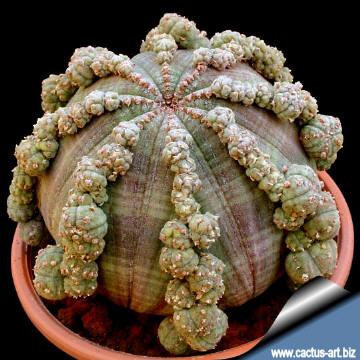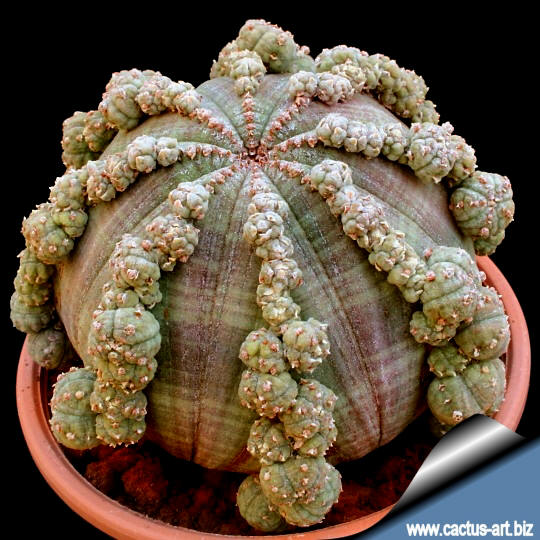|
|
|

Due to the aesthetic quality this
cultivar is highly sought after.
|
|
Description:
Globular in shape, predominantly a green/grey colour with purplish
longitudinal and transverse striping, creating an almost plaid effect.
There are eight distinct, broad, vertical
ribs that are slightly raised with shallow furrows in between. On
top of the ribs are minute
axillary shoots in a continuous series on each
node of the
stem .
|
 |
 |
|


Advertising
|
|
|
|
|
|
Family:
Euphorbiaceae
Scientific name: Euphorbia obesa
Hook.
f.
forma prolifera
Common Names include: Basketball, Sea Urchin, Baseball,
Living Baseball, Gingham,
Golf ball.
Conservation status: Listed in
CITES appendix 2.
Origin:
Garden origin (Nursery
produced cultivar)

|
|
|
|
Cultivation: Like a sunny position but can also be
grown out of where frost is not too severe , it can tolerate
temperatures down -5°C . It does best in
a mineral soil, but is tolerant of a wide range of soil types. Good
drainage is essential. Water sparingly during the summer months and keep
dry in winter. It is a slow growing long lived plant and once
established, it will be content in its position and with its soil for
years. It can tolerate moderate shade, and a plant that has been growing
in shade should be slowly hardened off before placing it in full sun as
the plant will be severely scorched if moved too suddenly from shade
into sun.
Propagation:
It is propagated from by cuttings or grafting.
Note: As with all other Euphorbias,
when a plant get damaged it exudes a thick white milky sap known as
latex. This latex is poisonous and may irritate skin.
|
|
Photo of conspecific taxa, varieties, forms and cultivars of
Euphorbia obesa.
|
|